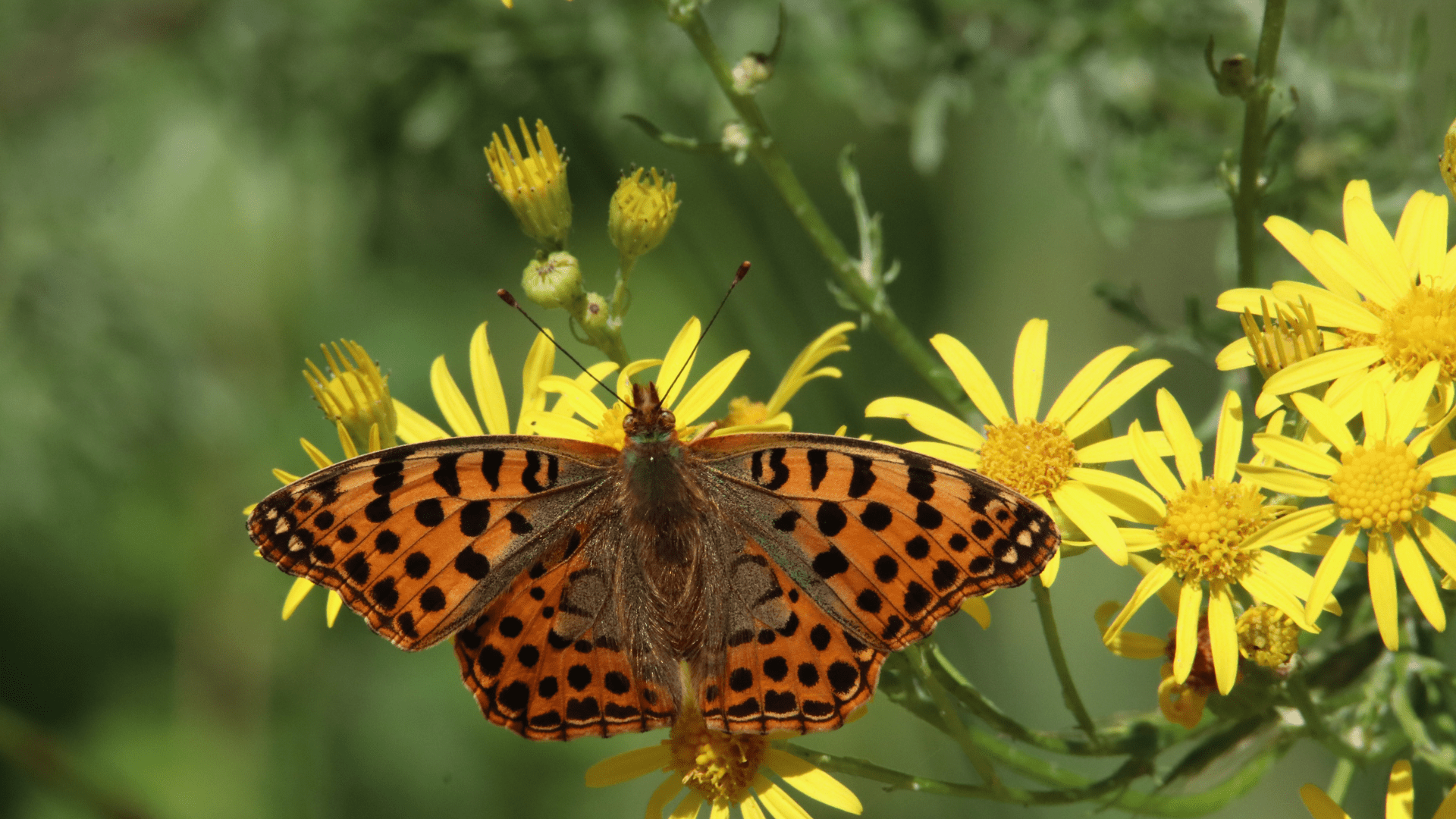The sharp decrease in biodiversity has been recognised as an environmental emergency. Modern agriculture’s emphasis on maximising production to meet increased demands in food has resulted in habitats being destroyed which has contributed towards this decline.
Insects, birds and animals play a vital role in biodiversity. A balance needs to be found on farms where wildlife can thrive without reducing potential food production.
Enhancing biodiversity on farms is crucial, but it doesn’t mean sacrificing large areas of productive farmland. There are a number of easy to implement measures that you can do on your farm to create better habitats for birds, mammals, insects and various plant species.
In this blog, we will explore effective ways you can boost biodiversity on your farm without compromising productivity.
Advantages of Increasing Biodiversity on Farms
Increasing biodiversity is important for a healthy ecosystem, which we depend on for clean air and substantiable food sources.
Biodiversity can benefit farms by improving the potential of their agricultural production. Reasons for this include:
- Healthier Ecosystems: A diverse range of plants, animals, and insects are required to maintain a balanced ecosystem. When your ecosystem is healthy, it can result in richer soil, improved water quality, and greater nutrient cycles, which are critical for sustainable farming.
- Increased Pollination: Biodiversity includes a variety of pollinators like bees, butterflies, and birds. Pollinators like these play a key role in the reproduction of crops which can lead to higher yields and increased crop quality.
- Natural Pest Control: A diverse ecosystem results in efficient pest control.
Predatory insects, birds, and other animals help keep pest populations in check, reducing the need for chemical pesticides
- Richer Soil: Different plants help soil health in various ways. Some fix nitrogen, others break up compacted soil, and some add organic matter. This diversity improves soil fertility and structure, supporting better crop growth.
- Improved Resilience: Biodiverse farms are better able to handle environmental changes and extreme weather. With a variety of species, these farms can better cope with diseases, pests, and climate changes, leading to more stable food production.
- More Sustainable Practices: Enhancing biodiversity aligns with sustainable farming practices. It supports long-term productivity and environmental care, making sure farming stays viable for future generations.
You can measure biodiversity on your farm using the Cool Farm Tool to see how you are performing and what you can do to improve.
How to Improve Biodiversity on Farms
There are a number of things you can do to increase biodiversity on farms…
- Plant more flowers
- Plant more trees
- Add ponds to your farm
- Put up bat boxes
- Create bee scrapes
- Maintain wetlands
- Leave a winter stubble
- Grow hedgerows
- Add nettle patches
Plant More Flowers

Having plants that flower throughout the year ensures a continuous food supply for wildlife, which helps to quickly establish balance on your farm.
Flowers offer essential food for insects, reducing the likelihood of them eating your produce. The best plants for attracting insects and bees include:
- Crocus: Early spring flowers; plant bulbs in autumn.
- Honeysuckle: Fragrant, fast-growing, ideal for climbing.
- Foxgloves: Bell-shaped flowers; attract returning insects.
- Viper’s Bugloss: Hardy annual; blooms in midsummer.
- Lavender: Fragrant, easy-to-grow; attracts honeybees.
- Sedums: Versatile, hardy; attract insects.
- Hellebore: Early spring; thrive in shade.
- Bluebells: Ideal for shaded areas; early summer blooms.
- Forget-me-nots: Suitable for containers/borders.
- Allium: Large flower heads; striking in containers/borders.
- Snapdragon: Easy-to-grow annuals; attract bees.
- Buddleia: Attracts butterflies, bees; low-maintenance.
- Hardy Geraniums: Versatile; add colour and cover.
- Mint: Fragrant; attracts insects, can be invasive.
- Marjoram: Perennial herb; attracts bees.
- Wisteria: South-facing walls/pergolas; fragrant blooms.
- Iris: Elegant flowers; some thrive in wet areas.
- Hollyhocks: Iconic tall flowers; attract insects.
- Sunflower: Bright, cheerful; loved by bees.
Here are some key things to consider when growing more flowers and plants on your farm.
- Diverse Plant Structures: Include tall, small, and climbing plants.
- Wildlife Corridors: Create corridors for easy wildlife movement.
- Cluster Flowers and Plants: Group closely for insect access.
- Distract Insects with Flowers: Plant attractive flowers near vegetables.
Strategically planting flowers creates habitats for wildlife, protects your produce, and fosters a cohesive environment, significantly increasing farm biodiversity.
Plant More Trees
Growing a variety of trees is crucial for farm biodiversity as:
- It can provide shelter and food for birds, animals, and insects.
- Plant species thrive at different times of the year.
Enhance biodiversity by considering tree height, width, and density to appeal to diverse wildlife. Trees offer birds staged descent to the ground, making it easier for them to visit your farm.
Recommended tree species:
- Blackthorn: First flowering shrub of the year, supporting year-round biodiversity.
- Hawthorn: Spring blossoms boost insect activity; provides berries for birds and shelter for animals.
- Forsythia: Yellow flowers in February and March attract insects.
- Winter Honeysuckle: Flowers in winter, contributing to annual biodiversity.
- Woodland Trees: Add levels to your farm; fallen leaves protect soil and create homes for creatures.
The Cool Farm Tool can help you find out which species groups are benefiting from your practices and how you can increase and expand them.
Add Ponds to Your Farm
Ponds are great for increasing biodiversity as they provide excellent homes for toads and frogs. At night, they venture into vegetable beds, helping with pest control by eating slugs, snails, and other pests, helping to protect your produce from being nibbled.
Creating ponds is also simple to do too. You can create them by:
- Digging holes and lining them.
- Repurposing old sinks and placing them in a hole you have dug.
- Digging buckets into the ground to create small water features .
It’s important to remember to have different levels in your ponds too. This allows wildlife to climb out if they fall in, provides places for birds to drink and bathe, and offers spawning areas for amphibians to easily come and go as they please. Rocks, bricks or pieces of wood are a good way to add tiers to your ponds.
If your pond fills up with too much vegetation, it may need to be cleaned out to restore its biodiversity. Ponds are a great way to increase biodiversity on your farm as they can attract lots of aquatic wildlife and flying insects like dragonflies.
Put Up Bat Boxes
Bats provide natural pest control by eating insects like midges, mosquitoes, and moths. The presence of bats indicates a healthy, insect-rich environment.
To attract bats:
- Ensure an insect-rich environment by planting flowers, especially pale or white ones, to attract night-flying insects.
- Create ponds to attract insects that bats feed on.
Provide shelter with bat boxes:
- Attach to trees or buildings in sunny, undisturbed locations.
- Avoid placing near doors or windows to prevent disturbances.
In the UK, all bat species and their breeding sites and resting areas are legally protected. If you have bats on your farm, you must not disturb them.
Create Bee Scrapes
Lone bees and bumblebees are essential for pollinating wildflowers on farms. You can help increase their numbers and boost biodiversity by creating a bee scrape, which is a simple nesting area for solitary bees.
You can make a bee scrape by:
- Choosing a good location, preferably a sunny, south-facing bank.
- Clear the area by removing all vegetation to expose the soil. An area of 1m by 1m is a good starting point, but if you can make it bigger, that’s even better.
- Watch out for nests as solitary bees will make small “drill holes” in the soil.
- Regularly maintain the scrape by clearing new vegetation without disturbing the bees.
The bees need pollen so make sure there are lots of wildflowers or flowering shrubs nearby for them. Bee scrapes are a great way to support these important pollinators and improve your farm’s biodiversity.
Maintain Wetlands
Wetlands are very important to the environment as they play a crucial role in flood mitigation and carbon sequestration. They are a crucial habitat for a variety of mammals, birds, invertebrates and amphibians.
Key facts about wetlands:
- They are permanently waterlogged areas include marshes, bogs, reedbeds, and wet grassland.
- Cannot be artificially created on farms; reintroduction requires blocking drains to accumulate water.
- Common in Scotland due to high rainfall and poorly draining soil.
- Maintain biodiversity by varying vegetation height through grazing.
- Remove livestock for 3-4 months in summer to promote plant growth, flowering, and seeding.
- Wetland plants thrive in nutrient-poor soils, no need for fertilisers or slurry.
Leave a Winter Stubble
Winter stubble from spring cereals are a great way to support biodiversity on farms as they enhance soil quality and provide an essential winter food source for seed-eating birds like skylarks and finches.
Key facts about winter stubble:
- Keep 10% of cropped area as stubble until mid-February.
- Offers cover and supports growth of arable weeds and wildflowers.
- Reduces soil erosion and nutrient loss.
- Enhances soil organic matter for the next crop.
- Avoid using herbicide or fertiliser between harvests.
- Barley stubble attracts more birds than wheat stubble; spring barley stubble is preferable to winter barley.
Grow Hedgerows
Hedgerows can boost farm biodiversity and also provide many benefits including:
- Creating habitat corridors between conserved areas of land thus enabling safe movement for species that avoid open fields.
- Sequestering carbon dioxide, similar to trees.
- Offering food and shelter from rain and sun for livestock and other birds, mammals, and insects.
To maximise benefits, let hedgerows grow and mature fully. Trim sides annually to prevent field encroachment and roadside hazards.
Add Nettle Patches

Butterflies play a vital role in pollination and are a key part of biodiversity. There are some butterfly species that require nettles as part of their life cycle so adding nettle patches to your farm is something you should consider. Butterflies lay their eggs on nettles, and the caterpillars feed on the nettle leaves before becoming butterflies.
To make a nettle patch, dig up some nettles in winter and move them to a grassy area. Plant them at least 20 metres from hedgerows to protect them from birds and ensure they get lots of sunlight.
To create a nettle patch:
- Dig up nettles in winter and move to a grassy area.
- Plant at least 20 metres from hedgerows for bird protection and sunlight exposure.
Nettle patches are very easy to maintain. You simply need to cut them in mid to late June to help attract more butterflies to it.
Maintain nettle patches by cutting them in mid to late June to attract more butterflies.
Conclusion
Increasing biodiversity on farms is essential for creating a healthier ecosystem. Farmers are wanting to maximise production to meet the global rise in demand for food, however there are ways to improve biodiversity without impacting this.
By implementing simple and effective measures, farmers can improve ecosystem health by attracting a wide variety of wildlife to their farms which can help with pollination, pest control, soil health and more.
Embracing biodiversity is a vital step towards ensuring that farming remains sustainable and prosperous for future generations. Contact Cool Farm to find out more about biodiversity and see how our tool can help you measure biodiversity.









